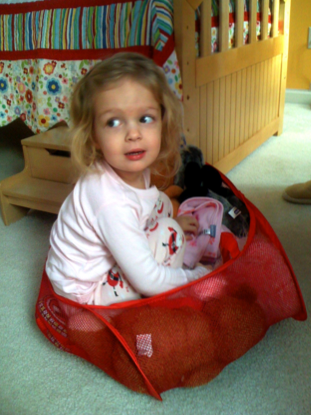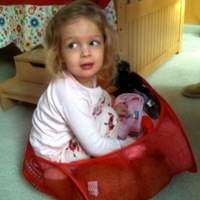Sir Ken Robinson was recently interviewed for the “Teaching for the 21st Century” issue of Educational Leadership. more
The article “Why Creativity Now? A Conversation with Sir Ken Robinson” notes three misconception that people have about creativity.
One is that it’s about special people—that only a few people are really creative. Everybody has tremendous creative capacities. A policy for creativity in education needs to be about everybody, not just a few.
… It’s about special activities. People associate creativity with the arts only. … education for creativity is about the whole curriculum, not just part of it.
… It’s just about letting yourself go… Really, creativity is a disciplined process that requires skill, knowledge, and control. Obviously, it also requires imagination and inspiration…. It’s a disciplined path of daily education.
I agree with Robinson but he defines creativity in a way that I find a bit narrow ”a process of having original ideas that have value.” I define creating more broadly as “a new combination of old elements.” The distinction between the two definitions is important. As educators we want to move all our students along a full spectrum of Blooms’ Taxonomy. If we want our students to reach the highest level of critical thinking, then we need to be clear on our goals.
Creating requires both a strong foundation in content knowledge and the ability to apply that knowledge in new ways – usually across a variety of disciplines. And it requires using all of Bloom’s skills from remembering through creating. It begins with a firm grasp of the basics and includes analyzing patterns and needs, evaluating alternatives and finally creating something new. When seen as as “a new combination of old elements,” creating is not limited to the “creative.” It’s something that all students can do, and one of the goals of the new Common Core standrards.
 To illustrate the point that all students can create, here’s a photo of my granddaughter, Zoe taken when she was a toddler. I had walked into her room and saw her sitting in a mesh basket used to store her stuffed animals. When I asked her what she was doing, she quickly replied “I have a toy bath.”
To illustrate the point that all students can create, here’s a photo of my granddaughter, Zoe taken when she was a toddler. I had walked into her room and saw her sitting in a mesh basket used to store her stuffed animals. When I asked her what she was doing, she quickly replied “I have a toy bath.”
Was their “value” in her “creation?” Probably not.
But don’t try to tell me that this little cutie isn’t creative!


Great picture and great story. Thanks.
Creativity from a teaching standpoint is looking at what you have to work with and getting more out of it than people would expect. I will just give you a quick example of a teacher friend’s creativity: no computer labs, 35 crappy computers in the library with no video creation software, but there are computer classrooms on campus. So she asks the computer classroom teacher if the rooms are ever vacant and then works her kids into them. That’s creativity that leads to student creativity. Too often teachers are saying, “Poor me.” Forget that, figure it out and be creative.
Hi David,
Thanks for the reminder about teacher creativity. I started my teaching career in isolated rural school of 300 kids K-12. I had very little to work with. Creativity was must!
Cheers,
Peter
Perhaps the value in your granddaughter’s creation lies in the process of thinking inductively (recognizing an essential and unvarying characteristic, to borrow a phrase of Madeline Hunter’s, of the basket) and then in practicing the affective skills of “valuing” and “organizing.” I see a very creatively valuable scene unfolding here!
Thanks for your post and the link to Ken Robinson’s ASCD interview!
My son once brought home from school a storybook about a clown who went shopping. In one shop the clown bought a red nose and put it in his bag, in the next a silly hat, which he also put in his bag, and in the third shop he bought some big long shoes, which again he put into his bag. When he arrived home he looked in his bag and found it empty. There was a hole at the bottom of the bag! Anyway I was surprised to find at the back of the book some ‘critical thinking questions’, and I asked my son:
“Why do you think the clown bought a red nose?”
After a while he answered: “Because he wanted to look like Rudolph the Red Nose Reindeer?”
Full of pride, I praised him for his answer.